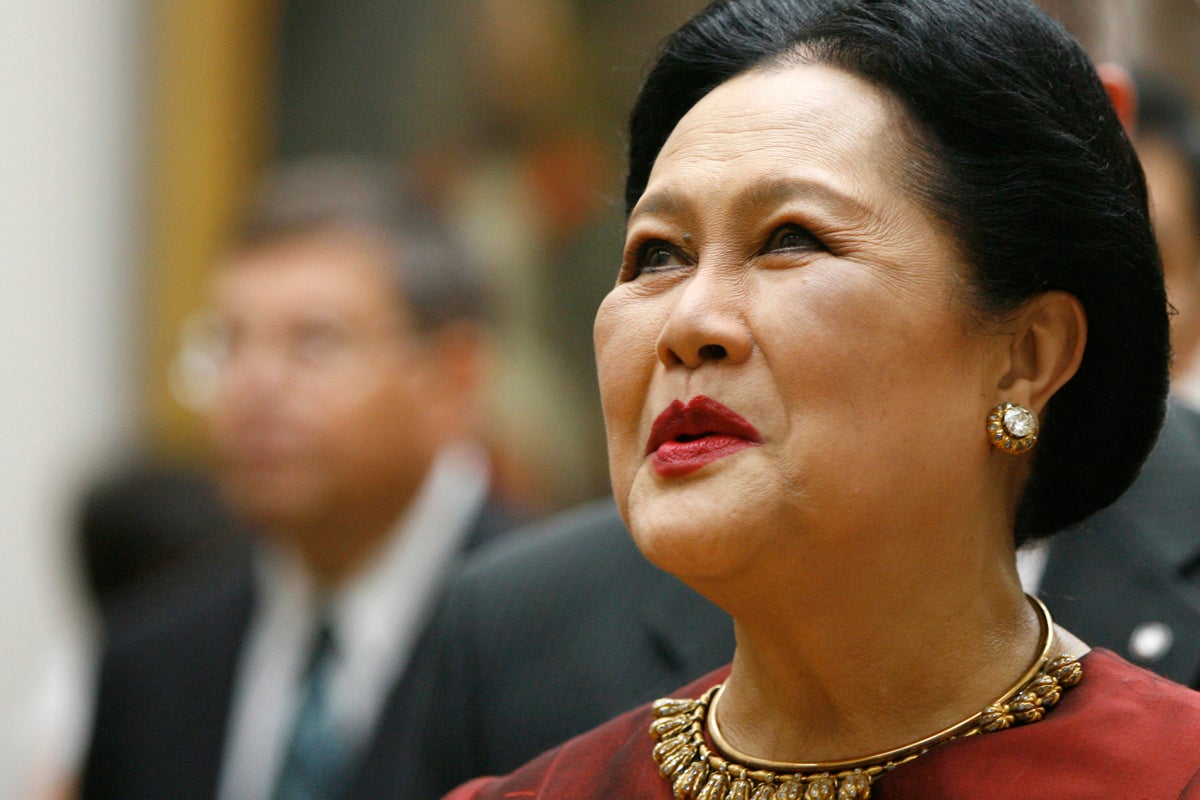Your support helps us to tell the story
From reproductive rights to climate change to Big Tech, The Independent is on the ground when the story is developing. Whether it’s investigating the financials of Elon Musk’s pro-Trump PAC or producing our latest documentary, ‘The A Word’, which shines a light on the American women fighting for reproductive rights, we know how important it is to parse out the facts from the messaging.
At such a critical moment in US history, we need reporters on the ground. Your donation allows us to keep sending journalists to speak to both sides of the story.
The Independent is trusted by Americans across the entire political spectrum. And unlike many other quality news outlets, we choose not to lock Americans out of our reporting and analysis with paywalls. We believe quality journalism should be available to everyone, paid for by those who can afford it.
Your support makes all the difference.Read more
Thailand’s Queen Mother Sirikit, who supervised royal projects to help the rural poor, preserve traditional craft-making and protect the environment, died on Friday. She was 93.
The Royal Household Bureau said she died in a hospital in Bangkok. Since 17 October, she had been suffering from a blood infection, but despite her medical team’s efforts, her condition did not improve. She had been largely absent from public life in recent years due to declining health. Her husband, King Bhumibol Adulyadej, died in October 2016.
Photos released by the palace for her 88th birthday showed her son, King Maha Vajiralongkorn, and other royals visiting the queen mother at Chulalongkorn Hospital, where she was receiving long-term care.
Although overshadowed by her late husband and her son, Sirikit was beloved and influential in her own right. Her portrait was displayed in homes, offices and public spaces across Thailand, and her 12 August birthday was celebrated as Mother’s Day. Her activities ranged from helping Cambodian refugees to saving some of the country’s once-lush forests from destruction.
Yet as the monarchy’s role in society was increasingly scrutinised during Thailand’s last decades of political turbulence, so too was the queen’s part in it. Stories circulated about her behind-the-scenes influence during a period marked by two military takeovers and several rounds of bloody street protests. And when she publicly attended the funeral of a protester killed during one clash with police, it marked for many her taking a side in the political schism.
Sirikit Kitiyakara was born into a rich, aristocratic family in Bangkok on 12 August 1932, the year the absolute monarchy was replaced by a constitutional system. Both of her parents were related to earlier kings of the current Chakri dynasty.
She attended schools in wartime Bangkok, the target of Allied air raids, and after World War II, moved with her diplomat father to France, where he served as ambassador.
At 16, she met Thailand’s newly crowned king in Paris, where she was studying music and languages. Their friendship blossomed after Bhumibol suffered a near-fatal car accident and she moved to Switzerland, where he was studying, to help care for him. The king courted her with poetry and composed a waltz titled, “I Dream of You.”
The pair married in 1950, and at a coronation ceremony later the same year, both vowed to “reign with righteousness for the benefit and happiness of the Siamese (Thai) people”.
The couple had four children: the current King Maha Vajiralongkorn, and princesses Ubolratana, Sirindhorn and Chulabhorn.
During their early married life, the Thai royals crisscrossed the world as goodwill ambassadors and forged personal ties with world leaders.
But by the early 1970s, the king and queen were devoting most of their energies to Thailand’s domestic problems, including rural poverty, opium addiction in hill tribes and a communist insurgency.
Each year, the couple travelled around the countryside while also officiating at more than 500 royal, religious and state ceremonies.
The queen, who was an impeccable dresser and avid shopper, also relished climbing hills and entering squalid villages where older women called her “daughter”.
Thousands raised their problems to her, ranging from marital squabbles to serious diseases, and the queen and her assistants took up many personally.
While some in Bangkok gossiped about her involvement in palace intrigues and her lavish lifestyle, her popularity in the countryside endured.
“Misunderstandings arise between people in rural areas and the rich, so-called civilised people in Bangkok. People in rural Thailand say they are neglected, and we try to fill that gap by staying with them in remote areas,” she said in an interview with The Associated Press in 1979.
Royal development projects were set up across Thailand, some of them initiated and directly supervised by the queen.
To increase the income of poor rural families and preserve dying crafts, the queen in 1976 launched SUPPORT, a foundation which has trained thousands of villagers in silk-weaving, jewellery-making, painting, ceramics and other traditional crafts.
Sometimes dubbed the “Green Queen”, she also set up wildlife breeding centres, “open zoos”, and hatcheries to save endangered sea turtles. Her Forest Loves Water and Little House in the Forest projects sought to demonstrate the economic gains of preserving forest cover and water sources.
While royalty elsewhere had only ceremonial or symbolic roles, Queen Sirikit believed the monarchy was a vital institution in Thailand.
“There are some in the universities who think the monarchy is obsolete. But I think Thailand needs an understanding monarch,” she said in the 1979 interview. “At the call, ‘The king is coming,’ thousands will gather.
“The mere word king has something magic in it. It is wonderful.”

